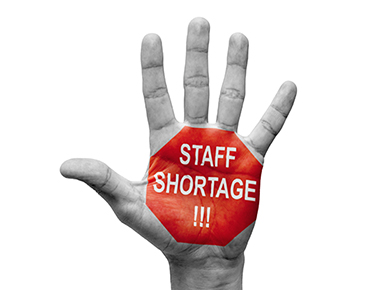

Flexible working has been shown to improve employee engagement and well-being, in a variety of ways. So employers who want happier, healthier, more motivated staff need to take it seriously.

It’s increasingly understood that employers who take proper care of their employees don’t just get a warm feeling inside. The impact of positive well-being and engagement, on the individual and their performance, is no longer in any doubt. And flexible working has a huge part to play in making this happen.
To start with, it has been shown to support general mental and physical well-being, in a number of ways:
And here are some more specific examples of the positive impact it can have on employees:
For parents of small children, and people looking after an elderly relative, being able to flex around medical appointments, school runs and other logistical issues makes being a carer easier to manage.
When senior level flexible roles are made available, people who need to work flexibly are able to progress their careers, making best use of their skills and improving their job satisfaction.
In a Cranfield University[1] survey of flexible workers, 97% of managers said their quantity of work improved or stayed the same and 93% said their quality of the work improved or stayed the same. Achieving more within a flexible framework is likely to lead to increased job satisfaction.
All of the above make it more likely that flexible workers will be more motivated and happier. According to Dr Mark Winwood, a clinical director of psychological services, “The more control any of us feel we have over our working lives, the better we feel about work.”
It’s for all of these reasons that the demand for flexibility is at an all-time high. Our own research has indicated that 87% of employees either work flexibly already, or wish they could. And according to a survey by the Centre for the Modern Family, 23% of UK workers would be willing to take a pay cut in order to have more flexible working hours.
So if you want to recruit and retain healthy, motivated and productive employees, focusing on flexibility is a great way to start.
Published December 2018

Our enduring social aim at Timewise is to enable women and men to find the flexibility they need in their careers without reducing their value in the workplace.
Professional services firm Deloitte also shares this aim – providing a working environment where everyone is able to enjoy a successful career alongside a fulfilling life outside work. It is this shared aim that led Timewise and Deloitte to produce our Manifesto for Change.
To prepare our manifesto, a research survey was conducted amongst 1800 professionals working in the UK. The survey was followed up by qualitative research interviews with 12 business leaders.
Key findings from the research are shown below:
The survey identified several perceived barriers to flexible working, including outdated workplace cultures and attitudes that perpetuate the ‘flexibility stigma’. It’s clear that even when business leaders want to accommodate the flexible working needs of their employees, there is a gap between what is said at the top and how that translates to everyday working life.

Because the barriers to embedding flexible working are primarily cultural, success must go beyond a programmatic approach. Both the survey respondents and our interviewees told us that real change only comes when leaders challenge workplace culture and dismantle practices that are no longer fit for purpose.

Based on the survey results, we developed a Manifesto for Change. We want this to be a blueprint for attitudes and actions across UK organisations. We want business leaders to recognise that getting flexible working right will drive success in their business. We want them to share best practice and be brave in trying new approaches.
The following five manifesto actions are what we believe will accelerate workplace change, making it fit for today’s flexible workforce:
Published May 2018

Flexible working means different things to different people. Our research focuses on the following types of flexibility, which are generally seen as favourable for the employee:
Our respondents included full-time workers who might be working flexibly now (or not), and may have told us they would prefer to work part-time or to work full-time but with flexibility in their working pattern.
BUSINESS IMPERATIVE TO HAVE A PROACTIVE STRATEGY FOR FLEXIBLE WORKING
THE NEED TO OFFER FLEXIBLE WORKING IN THE RECRUITMENT PROCESS
Timewise commissioned the survey from ComRes, who interviewed 3,001 UK adults online between 13th and 26th June 2017. Within these sub-samples: 1,250 full-time employees; 750 part-time employees; 500 self-employed people; 501 people who were not working but wanted to work. All participants were aged 18+. The data for full-time employees and for part time employees was weighted to be representative of the UK working population for those employment types; other data were unweighted.
Published September 2017
By Karen Mattison MBE, Co-Founder
 Here at Timewise, we are known for our robust research into the headline issues around part-time and flexible working. Our findings around who wants to flex, and the impact of doing so on pay and progression, are widely quoted and are helping to drive mindset and culture change all over the UK.
Here at Timewise, we are known for our robust research into the headline issues around part-time and flexible working. Our findings around who wants to flex, and the impact of doing so on pay and progression, are widely quoted and are helping to drive mindset and culture change all over the UK.
So when we heard anecdotal evidence that part-time employees feel they are missing out on opportunities because they aren’t treated as full members of the team, we considered that this too was worth investigating. While it may sound like a softer issue, we suspected that it could have a serious impact, not just on part-timers’ wellbeing, but also their ability to deliver their roles successfully, and therefore on business performance.
The resulting research, and subsequent report, Part-Time Work: The Exclusion Zone? shows that we were right to be concerned. Amongst the headline findings are that two-thirds of part-timers feel isolated at work and struggle to make connections, and a similar number feel less up-to-date with team developments. More than half also feel they have fallen behind their full-time colleagues in terms of skills and knowledge.
And while that’s not great for the employees themselves, it also has implications for employers, who are failing to capitalise on the talent and potential that their part-time workers have to offer. Which, as we know only too well, can create extra challenges around issues such as board diversity and the gender pay gap.
The good news is that this workplace ‘flexism’ can be tackled relatively easily. Simply by taking part-time schedules into account when planning team meetings, client events and social opportunities, employers stand to maximise the impact that these employers can have on the business.
They’ll also be better placed to upskill and progress their part-time workers by considering them more carefully when planning training and other development opportunities. And inevitably, that will allow them to hold onto these talented employees for longer.
We’re responding to this research ourselves, by launching the Timewise PowerFlex Network, the UK’s first-ever cross-business network to support middle and senior management part-time and flexible workers.
Designed to offer a dynamic mix of networking opportunities, inspirational speakers and bespoke training, it will be scheduled to help part-time and flexible workers enjoy the kind of opportunities that their full-time colleagues take for granted. If you’d be interested in hosting an event, or would like to know more, do please get in touch.
Part-time workers don’t expect the world to revolve around them. As their responses made clear, they fully accept that they can’t be present for every single meeting or event, and that there are times when they will need to be flexible in return.
But given that 9 in 10 employees say they would prefer to work part-time or flexibly, there’s no room for flexism in today’s workplace. This issue needs to be addressed if employers are to reap the rewards of an increasingly flexible workforce; if you need any support, we’ll be happy to help.
Published December 2018

By Emma Stewart, Co-Founder
In October last year, as part of the discussion around the gender pay gap, the Prime Minister called on employers to make flexible working a reality for all employees. Her proposal, which we have long been lobbying for, is that companies should advertise jobs as flexible from day one, unless there are solid business reasons not to.
Following this call, the Department for Business, Energy and Industrial Strategy (DBEIS) has established a new Flexible Working Taskforce, chaired by the CIPD. It brings together representatives from government, employee groups, employer organisations and other professional bodies, and I am delighted to have been asked to join it.
Over the next 18 months, the taskforce will be investigating the barriers that prevent employers from offering, and individuals from taking up, flexible working options. It will also identify positive actions to overcome these barriers. This is a fantastic opportunity to drive real change, with government input and investment behind us.
I have already presented an insight session on flexible hiring to my fellow taskforce members, in collaboration with Lloyds Banking Group, sharing what works and how it works. And I am looking forward to incorporating the Timewise perspective further, as we review the employee life course from recruitment to retention to progression. Our aim is to develop tangible recommendations that will encourage and support more businesses to embrace both flexible working and flexible hiring.
It’s an exciting time for those of us in the flexible working sphere. As I’m sure you’d expect from Timewise, we’re grabbing the opportunity and making it count. We’ll let you know any developments as they arise.
Published July 2018

By Karen Mattison, Co-Founder
The recent coverage of the gender pay gap has shone a much-needed light on the scale of the problem around female workplace progression. And it’s encouraging to see so many companies promising to take action, from training HR managers in unconscious bias to introducing mentoring programmes that boost female employees’ confidence.
But although initiatives like these have a part to play in helping women to progress, they don’t actually address the root of the problem, which is this: today’s workplace is not set up for families in which both partners work. The systems we have in place are still, even in 2018, based on senior people being able to put their jobs above everything else.
To give you an example, I was talking to a colleague recently about a networking event. The topic was interesting and relevant; the attendees were people she would have loved to connect with. But there was one sticking point: it was in the evening.
Now, if she really wanted to go, she could have found a way to make it happen. If her partner wasn’t able to get home in time, she could have tried to extend her childcare, or get a babysitter. But not all women, or indeed all parents, can jump through these hoops; and certainly not every time.
The fact is that this workplace norm, like so many others, is structurally incompatible with family life. And until we start dismantling these norms, and replacing them with flexible-friendly ones, female progression, and gender parity, will remain elusive.
It’s for this, critical reason that we have been working with Deloitte to create a Manifesto for Change. Built on our findings from a large-scale study and in-depth interviews with 12 business leaders, it’s a practical plan for action, setting out five steps that UK businesses need to take if they are to reset their workplaces:
The study particularly highlighted the degree to which the status quo is not supportive of flexible progression. 30% of respondents said they felt flexible workers were regarded as having less status and importance, and 25% felt such workers were given access to fewer opportunities and missed out on potential progression and promotion opportunities. It also made it clear that the onus is on employers to take down the barriers to flexible working, through cultural and structural change.
So now, employers, it’s over to you. Our research has flagged up the issues and our manifesto has set out the steps that will help you overcome them. And with the countdown to the next round of gender pay gap reporting having already begun, it’s time to take action. If you need help getting started, please get in touch.
To find out more about our training and consultancy services, including our introductory Flexible Audit, please call 020 7633 4444 or email info@timewise.co.uk
Published May 2018
By Emma Stewart, Co-Founder
At Timewise, we don’t believe that flexibility should come at any price; our focus is on delivering good quality flexible roles. But, as the Institute for Fiscal Studies stated in their 2018 report, “not working full time tends to shut down wage progression.” As a result, too many people end up trapped in entry-level roles, which are poorly paid, because they can’t get the flexibility they need higher up the scale.
One sector that illustrates this perfectly is retail. It employs around three million people, and has a higher incidence of low pay than any other sector. According to the British Retail Consortium’s 2020 research, flexibility in working hours is one of the main reasons people choose to work in the sector – but 56% of retail employees believe they are less likely to get promoted if they work part time.
As a first step towards tackling this problem, we partnered with the Joseph Rowntree Foundation and five major retailers to run our Retail Pioneers programme, a piece of action research followed by a written report. Launched last May, it set out to help each retailer understand what was getting in the way of flexibility at store management level, and then design and develop management roles with compatible flexibility built in.
As my colleague Amy Butterworth explains elsewhere, the programme has already begun to deliver real change for our pioneer partners, with each of them taking action to design flexible jobs differently. And that’s brilliant – but it’s not the end of the story. Our initial learnings can also be used by the rest of the retail sector and beyond, to tackle the structural barriers that prevent the progression of low-paid part-time workers. For example:
Initially, some of the pioneers were uncertain about working so closely with other retailers. But as the programme progressed, the benefits of the group approach became clear. The pioneers got valuable insights from sharing their experiences, and regularly challenged each other’s assumptions and assertions.
We all know by now (or we should) that the lack of women in senior roles contributes to the gender pay gap. But that doesn’t mean we should focus all our attention on moving women from middle-management upwards.
Helping women progress from entry-level roles to line management – as our retail pioneers are now doing – will also help close the gap. And building more gender-balanced workplaces makes good business sense for employers too.
During the programme, our five pioneers all came to the same conclusion: that building flexibility into management roles could aid progression for retail team members, enabling them to maximise their skills whilst retaining their flexibility.
However, each retailer had different factors to take into account, and so needed to develop their own individual solution, grounded in their own business. When it comes to flexible job design, there is no one-size-fits-all solution; each organisation needs to take a bespoke approach based on its specific data and drivers.
So far, so good. But, as useful as these learnings are, they need to be championed at a macro level if they’re to deliver real, systemic change.
I’m kick-starting this by joining a government taskforce looking at flexible working, in response to the Taylor Review on modern work. However, far more needs to done by government, employers and industry bodies to create better quality part-time and flexible roles.
Many employers are unaware that the lack of part-time and flexible options at management level traps skilled, ambitious employees in low-paid jobs. And even those who agree that flex is the answer may not know how to get started or, in tight margin sectors, have the resources to do so.
If we are going to answer the Taylor Review’s call for better flexible work which benefits both employers and employees, delivered at scale, then we need more involvement and investment from government, civic society, and other industry bodies. Here’s what needs to happen:
Our work has highlighted a real lack of evidence about what works, without which it will be difficult to persuade employers to take – and critically, invest in – action. It has also revealed the importance of having a road map which sets out HOW employers can design better flexible and part-time jobs, at all levels.
If we are serious about building a fairer jobs market, and helping people trapped in low-paid roles to progress their careers and raise their living standards, we need government to commit to investing in it. This will allow us to test a range of approaches and use our findings to incentivise further business action, something which is particularly critical in low-margin sectors where the business case for change is not well established.
At a regional level, LEPs and metro mayors also have a part to play in sharing good practice and stimulating action to create better quality part-time jobs. This will support their inclusive growth strategies and help create fairer workplaces.
Our Retail Pioneers programme has benefitted hugely from our partnership with the BRC. They played a pivotal role in helping us get the programme off the ground, and are continuing to work with us to develop practical flexible working solutions.
Most industries have an equivalent organisation or body; the more of them that invest in championing flexible working, the greater the impact will be.
Our pioneers found that taking a deep dive into their workforce data threw up some surprises; in the words of Lesley Ballantyne from The John Lewis Partnership, “the programme has brought issues to the surface that we previously only had an inkling of.” Our consultancy team offer a flexible audit which can help support this process.
Underpinning all this, we need a space in which innovative practice can be designed and developed. We invest in innovation for R&D and technology; it’s time we started investing in innovation for designing good quality work. So this autumn, we’re launching the Timewise Innovation Unit, to create a forum in which this can happen.
By doing so, we will be able to help more employers design the flexible jobs that will progress their workers, maximise their skills and ultimately create more productive workplaces. I’m really looking forward to driving this change through the Innovation Unit, and I hope you’ll get involved; watch this space.
To find out more or get involved with the Timewise Innovation Unit, please contact Emma on 020 7633 4444 or email info@timewise.co.uk
Published May 2018
 Since its launch in 2015, Timewise’s annual UK Flexible Jobs Index has played an important part in the flexible working conversation. It’s allowed us to track the (slow) growth of the flexible jobs market, and given politicians, business leaders, campaigners and employers the facts, figures and insights they need to open up the workplace to flexibility and make it fairer for all.
Since its launch in 2015, Timewise’s annual UK Flexible Jobs Index has played an important part in the flexible working conversation. It’s allowed us to track the (slow) growth of the flexible jobs market, and given politicians, business leaders, campaigners and employers the facts, figures and insights they need to open up the workplace to flexibility and make it fairer for all.
So we were delighted when the Scottish Government and Family Friendly Working Scotland asked us to create a bespoke index for Scotland, to shine a light on the current state of the flexible hiring market in the country. As with its UK equivalent, the inaugural Timewise Scottish Flexible Jobs Index shows that we have a long way to go if we’re to match the number and type of flexibly advertised jobs with the people who need them.
The research found that only 11.9% of jobs paying more than £20k full time equivalent (FTE) are advertised as offering flexibility at the point of hire – that’s just over one in eight. And the further you go up the salary ladder, the worse the ratio gets; for roles paying between £35k and £59k FTE, it drops to less than one in 10 (8.9%).
Yet the demand is certainly there; more than a third (34%) of unemployed people in Scotland are looking for part time or flexible vacancies, and those who currently work flexibly are also likely to be seeking similar opportunities when moving jobs. And that’s not including those who may have dropped out of the workforce altogether because the flexible jobs they needed weren’t there.
For people who want or need to work flexibly in Scotland, then, there’s a disproportionally small pool of jobs to apply for, particularly at a higher level. This can force people to trade down for flexibility, or get stuck in flexible jobs beneath their skill and ability levels, which not only blocks their own progression but can also limit mobility for less qualified people coming up behind them. And it can prevent some people from working at all, which can have a devastating effect, particularly on low-income households.
Of course, flexibility isn’t just about keeping employees happy (although obviously, it helps). As the demand for flexibility continues to increase, employers who have flexibility as part of their offer will be best-placed to attract and retain the best talent. It’s also been shown to improve employees’ productivity, motivation and engagement, not to mention helping address diversity and the gender pay gap.
So now the facts and figures are out in the open, and the benefits are clear, what should Scottish employers do to get behind flexible hiring? The answer is to think differently about the way flexible jobs are designed. Instead of assuming flexibility can’t work for certain roles, employers need to look at how, when and where a job needs to be done and create jobs that have flexibility built in. That means thinking innovatively, designing jobs that suit the way we live and work now, and being prepared to shout about it at the point of hire.
If Scottish employers get behind this, and start hiring on a truly flexible basis, there’s a real opportunity to create a strong, inclusive and lasting flexible jobs market, for the benefit of everyone. The Scottish Government has already committed to leading by example by becoming a more flexible recruiter, and we are delighted to be working with them achieve this; if you would like us to help you in a similar way, please do get in touch.
To find out more about our consultancy and training services, email info@timewise.co.uk
Published September 2017

Businesses have been warning about an impending skills shortage for some time now; and the evidence suggests that it’s really starting to bite. According to a new survey of 400 firms by the Open University, many UK employers have had to pay well above market rate to attract employees over the past year. And the university suggests that the annual cost of this to business could be as much as £2bn.
But for all of us at Timewise, this approach shows a startling lack of originality. Of course, potential employees are unlikely to refuse a higher salary; but by the same logic, a further cash incentive could easily persuade them to move on elsewhere. Whereas if you really want to attract a loyal, motivated and productive employee, there’s a much better way – offer them flexibility.
Thanks to advances in technology and flex-friendly government legislation, flexible working is becoming more common – and no longer just a way to entice women back from maternity leave. 92% of Millennials identify flexibility as a top priority when job hunting and, at the other end of the workforce, the Centre for Ageing Better argues that it could be a key factor in helping the growing number of over 50s work for longer.
It’s not just about what employees want either; the business case for flexibility is sound, and well-documented. For example, remote working champions tend to have less people in the building at once, allowing them to reduce their office space and so their business overheads. A survey by BT indicated that the productivity of flexible workers increased by 30%. And in a CIPD survey, 73% of employees said that flexible working improves staff motivation – and, critically, 75% said it has a positive effect on retention[1].
In short, then, flexible working makes sense for employers and appeals to employees. Yet, despite the fact that there are around 8.7 million people in the UK who would like to work flexibly, less than 1 in 10 jobs adverts currently offer this up front. So an employer who offered flexibility as part of the package – and even better, could demonstrate a flexible pathway for career progression – would immediately have the edge over one who doesn’t.
Our aim here at Timewise is for the offer of flexibility to become the norm; to be just another part of every job description, like holiday entitlement. We offer consultancy and training to organisations who share our aim, and we’re working at every level to bring about this change.
But in the meantime, for employers, offering flexibility at the point of hire is something that will make you really stand out. It will certainly increase your chances of catching the best talent – and unlike mere money, it’s likely to help you hold on to them too.
To find out more about our consultancy and training services, call 020 7633 4444 or email info@timewise.co.uk
Published July 2017
[1] CIPD 2012: “Flexible Working Provision and Uptake”

There’s no question that the gender pay gap is high up on the agenda. From 6th April 2017, all businesses and charities with over 250 employees will be legally required to collect data on the gap between the average hourly pay of the men and women who work there. And they’ll also need to report on their figures by 4th April each year, starting in 2018.
Clearly, asking organisations to report on this issue is a positive step – and a much needed one. A 2016 assessment of the gender pay gap from the Institute of Fiscal Studies put it at just over 18%, and Deloitte have predicted that, at the current rate of change, we won’t hit true pay parity until 2069. To be frank, we can’t afford to wait that long.
But hidden behind these gloomy predictions, there’s a devastatingly simple solution, waiting to be found; and it’s this. According to the 2016 Women and Equalities Committee report: “Flexible working for all lies at the heart of addressing the gender pay gap.”
Can it really be as simple as that? The answer, as we at Timewise know well, is a definite yes. The report also states:
“A large part of the gender pay gap is down to women’s concentration in part-time work which doesn’t make use of their skill…. Old-fashioned approaches to flexibility in the workplace and a lack of support for those wishing to re-enter the labour market are stopping employers from making the most of women’s talent and experience.”
It follows, then, that if we can make flexible working work for everyone, we can accelerate the narrowing of the gender pay gap. And that’s going to be more critical than ever once organisations are legally required to publish their figures; your reputation as a fair employer, and your ability to attract and retain the best talent, will depend on it.
At an organisational level, there are some key principles that you need to embed in order to make flexible working work, from creating a supportive culture to thinking about the best way to design flexible jobs. It’s not rocket science, but it certainly won’t happen by accident; our training and consultancy programmes can help.
But at a wider level, it’s actually the job market itself that needs fixing. Our research shows that only 8.7% of quality jobs are advertised as being open to flexibility at the point of hire; so people who need to work flexibly only have 1 in 10 jobs to apply for. It’s no wonder so many of them end up stuck in low-paid roles beneath their skill set; there’s simply nowhere else for them to go.
That’s why, last year, we launched our Hire Me My Way campaign, calling on organisations of all shapes and sizes to promote flexibility at the point of hire. So far, more than 30 major organisations have signed up to our campaign, unlocking thousands of quality jobs to flexible working; we hope you’ll consider joining us, too.
So our call out to employers today is, start as you mean to go on. Be prepared to shout about the fact that you believe in flexible working and that you know how to make it work. Develop a recruitment strategy based on finding the most talented people you possibly can, and be prepared to flex your roles to suit them.
It’s a sure-fire way to improve your gender pay gap figures, and the evidence suggests it will improve your profits and boost your productivity. But, most importantly, it will mean you’re playing your part in a much-needed job market revolution – and that’s great news for all of us.
Published April 2017